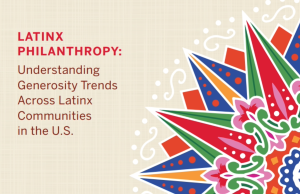How many emails should nonprofits send? As many as you can make interesting, according to Woodrow Rosenbaum. He is chief data officer for the GivingTuesdayData Commons. Rosenbaum emphasized the points that the past several years have been anything but typical for fundraising but also that organizations must not be shy about asking for donations — especially in difficult times.
The comments were made during a session he led titled “Using Data to Power More Generosity: Insights from GivingTuesday’s Data Commons,” during the recent GivingTuesday Summit, a virtual “kick-off party” ahead of GivingTuesday on Nov. 30.
“Some typical models and trends that existed for many years just completely broke down in 2020,” Rosenbaum said. “And that is an important opportunity to understand how these mechanisms work a little bit better. Some things that used to be correlated aren’t any more and so that means that they don’t necessarily have to be. With all of this change came a lot of uncertainty and risk but also some opportunity. We wanna help mitigate the former and leverage the latter,” he said.
There was a disconnect between donor growth and retention. Those are correlated in a typical year. “You don’t tend to see growth unless you retain those existing donors,” Rosenbaum said. Overall donor growth in 2020 while retention declined, which was a highly unusual situation and obviously very challenging for organizations, both in predictability and ability to meet the moment, he added. “At the same time, it also has some important opportunities.”
There’s a misguided concern by organizations that it wasn’t an appropriate time to fundraise. “Donors were saying, and consistently showing, they were wanting to give, ready to respond to all kinds of different causes. Having agency over challenges and concerns facing in their community meant being able to give financially as well as other ways,” Rosenbaum said. “Lack of action was one of the primary drivers of success or failure in 2020. If you’re not fundraising, you’re not getting money.”
Key factors for resiliency in the sector are the capacity to pivot; diverse funding sources, including small donors, and, a willingness to be active. “I can’t express this strongly enough: willingness to be active. Most gifts are solicited. So if organizations aren’t present, not meeting donors where they are, they’re not going to get a result,” Rosenbaum said.
“How are we going to support the sector to help withstand current and future challenges? One of the ways to do that is leveraging giving moments.”
Giving moments drive participation, according to Rosenbaum. “While uncertainty in economic situations is certainly a suppressor, throughout 2020 what we saw was this increased readiness to give, outweighing the negative, suppressing effects of any economic uncertainty,” he said.
“Don’t retreat from engaging givers, especially in tough times: Not despite times being tough but because times are tough,” Rosenbaum said. “You’re there to give them agency over things they care about.”








